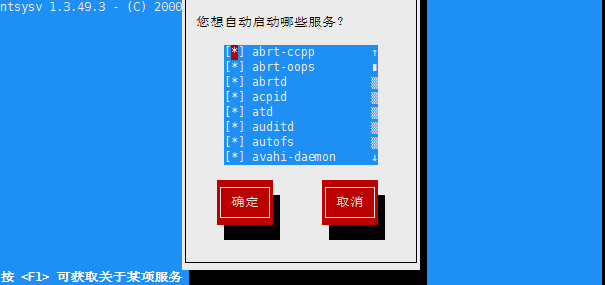Linux服务自启动
若程序(脚本)已注册成服务,则可通过service serviceName start/stop/status来启动服务、停止服务和查看服务状态,也可通过/etc/init.d/serviceName start/stop来开启和停止服务。
可通过/etc/rc.d/init.d或/etc/init.d查看linux全部服务。
方法一:修改配置文件
修改 /etc/rc.d/rc.local或/etc/rc.local文件(该文件在系统启动时,在输入用户名和密码之前最后读取的文件),加入服务启动命令来实现服务自启动。
#!/bin/sh |
方法二:chkconfig命令
chkconfig命令格式:chkconfig serviceName on/off
#自启动tomcat服务 |
方法三:通过ntsysv调用窗口模式来管理服务的自启动
ntsysv命令格式:ntsysv [–level 运行级别]
--level 运行级别:可以指定设定自启动的运行级别;
#只设定2、3、5级别的服务自启动 |
执行上述命令之后linux界面如下,使用空格键来选定/取消服务的自启动,其中*号代表该服务自启动。

注意:ntsysv属于redhat系列linux的专有命令
Linux脚本自启动
方法一:把脚本放到/etc/rc.local
脚本文件start_tomcat.sh
#!/bin/bash |
把需自启动的脚本文件放入/etc/rc.local
#!/bin/bash |
方法二:把sh脚本移动到/etc/profile.d
/etc/profile.d中的脚本文件执行情景:当一个用户登录Linux系统或使用切换到另一个用户时才会调用,所以不建议使用
Linux自启动命令
若要自启动命令,则把需要自启动的命令放在/etc/rc.local中。
